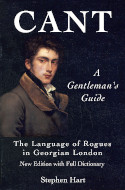FREEMASONS' LODGES
Mr. Elmes, in his admirable work, Sir Christopher Wren and his Times, 1852, thus glances at the position of Freemasonry in the Metropolis two centuries since, or from the time of the Great Fire:
"In 1666 Wren was nominated deputy Grand Master under Earl Rivers, and distinguished himself above all his predecessors in legislating for the body at large, and in promoting the interests of the lodges under his immediate care. He was Master of the St. Paul's Lodge, which, during the building of the Cathedral, assembled at the Goose and Gridiron in St. Paul's Churchyard, and is now the Lodge of Antiquity, acting by immemorial prescription, and regularly presided at its meetings for upwards of eighteen years. During his presidency he presented that Lodge with three mahogany candlesticks, beautifully carved, and the trowel and mallet which he used in laying the first stone of the Cathedral, June 21, 1675, which the brethren of that ancient and distinguished Lodge still possess and duly appreciate.
"During the building of the City, Lodges were held by the fraternity in different places, and several new ones constituted, which were attended by the leading architects and the best builders of the day, and amateur brethren of the mystic craft. In 1674 Earl Rivers resigned his grand-mastership, and George Villiers, Duke of Buckingham, was elected to the dignified office. He left the care of the Grand Lodge and the brotherhood to the deputy Grand Master Wren and his Wardens. During the short reign of James II., who tolerated no secret societies but the Jesuits, the Lodges were but thinly attended; but in 1685, Sir Christopher Wren was elected Grand Master of the Order, and nominated Gabriel Cibber, the sculptor, and Edward Strong, the master mason at St. Paul's and other of the City churches, as Grand Wardens. The Society has continued with various degrees of success to the present day, particularly under the grand-masterships of the Prince of Wales, afterwards King George IV.,[53] and his brother, the late Duke of Sussex, and since the death of the latter, under that of the Earl of Zetland; and Lodges under the constitution of the Grand Lodge of England are held in every part of the habitable globe, as its numerically and annually-increasing lists abundantly show."
Sir Francis Palgrave, in an elaborate paper in the Edinburgh Review, April, 1839, however, takes another view of the subject, telling us that "the connexion between the operative masons,[54] and those whom, without disrespect, we must term a convivial society of good fellows, met at the 'Goose and Gridiron, in St. Paul his Churchyard,' appears to have been finally dissolved about the beginning of the eighteenth century. The theoretical and mystic, for we dare not say ancient, Freemasons, separated from the Worshipful Company of Masons and Citizens of London about the period above mentioned. It appears from an inventory of the contents of the chest of the London Company, that not very long since, it contained 'a book wrote on parchment, and bound or stitched in parchment, containing 113 annals of the antiquity, rise, and progress of the art and mystery of Masonry.' But this document is not now to be found."
There is in existence, and known to persons who take an interest in the History of Freemasonry, a copperplate List of Freemasons' Lodges in London in the reign of Queen Anne, with a representation of the Signs, and some Masonic ceremony, in which are eleven figures of well-dressed men, in the costume of the above period. There were then 129 Lodges, of which 86 were in London, 36 in English cities, and seven abroad.
Freemasonry evidently sprang up in London at the building of St. Paul's; and many of the oldest Lodges are in the neighbourhood. But the head-quarters of Freemasonry, are the Grand Hall, in the rear of Freemasons' Tavern, 62, Great Queen-street, Lincoln's Inn Fields: it was commenced May 1, 1775, from the designs of Thomas Sandby, R.A., Professor of Architecture in the Royal Academy: 5000l. was raised by a Tontine towards the cost; and the Hall was opened and dedicated in solemn form, May 23, 1776; Lord Petre, Grand-Master. "It is the first house built in this country with the appropriate symbols of masonry, and with the suitable apartments for the holding of lodges, the initiating, passing, raising, and exalting of brethren." Here are held the Grand and other lodges, which hitherto assembled in the Halls of the City Companies.
Freemasons' Hall, as originally decorated, is shown in a print of the annual procession of Freemasons' Orphans, by T. Stothard, R.A. It is a finely-proportioned room, 92 feet by 43 feet, and 60 feet high; and will hold 1500 persons: it was re-decorated in 1846: the ceiling and coving are richly decorated; above the principal entrance is a large gallery, with an organ; and at the opposite end is a coved recess, flanked by a pair of fluted Ionic columns, and Egyptian doorways; the sides are decorated with fluted Ionic pilasters; and throughout the room in the frieze are masonic emblems, gilt upon a transparent blue ground. In the intercolumniations are full-length royal and other masonic portraits, including that of the Duke of Sussex, as Grand-Master, by Sir W. Beechey, R.A. In the end recess is a marble statue of the Duke of Sussex, executed for the Grand Lodge, by E. H. Baily, R.A. The statue is seven feet six inches high, and the pedestal six feet; the Duke wears the robes of a Knight of the Garter, and the Guelphic insignia: at his side is a small altar, sculptured with masonic emblems.
[53] The Prince was initiated in a Lodge at the Key and Garter, No. 26, Pall Mall.
[54] Hampton Court Palace was built by Freemasons, as appears from the very curious accounts of the expenses of the fabric, extant among the public records of London.
John Timbs
Club Life of London Vol. II
London, 1866

